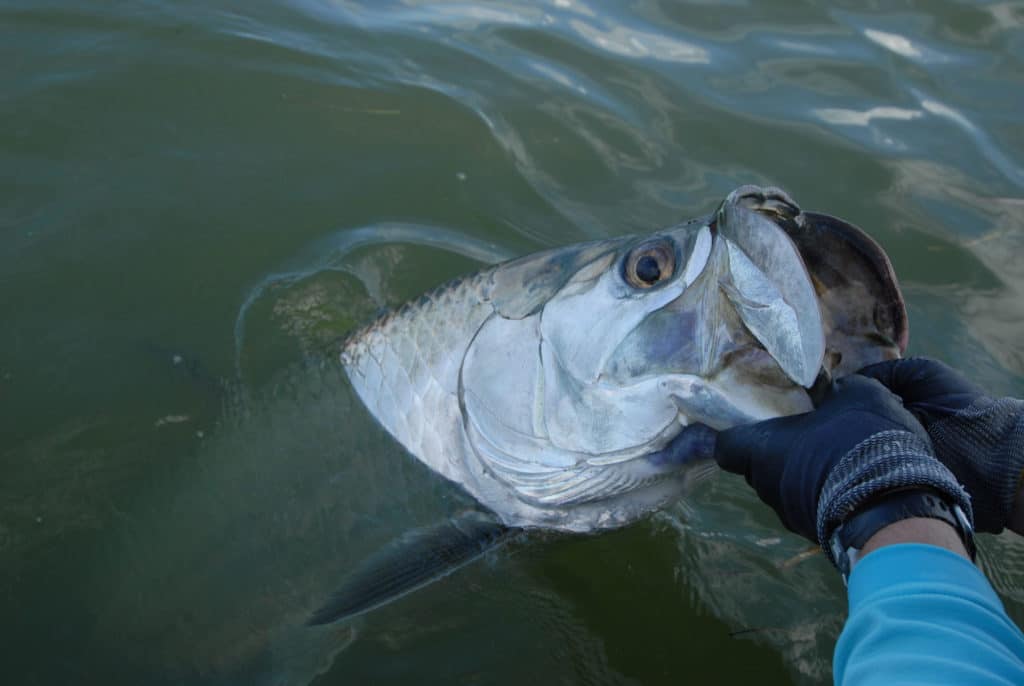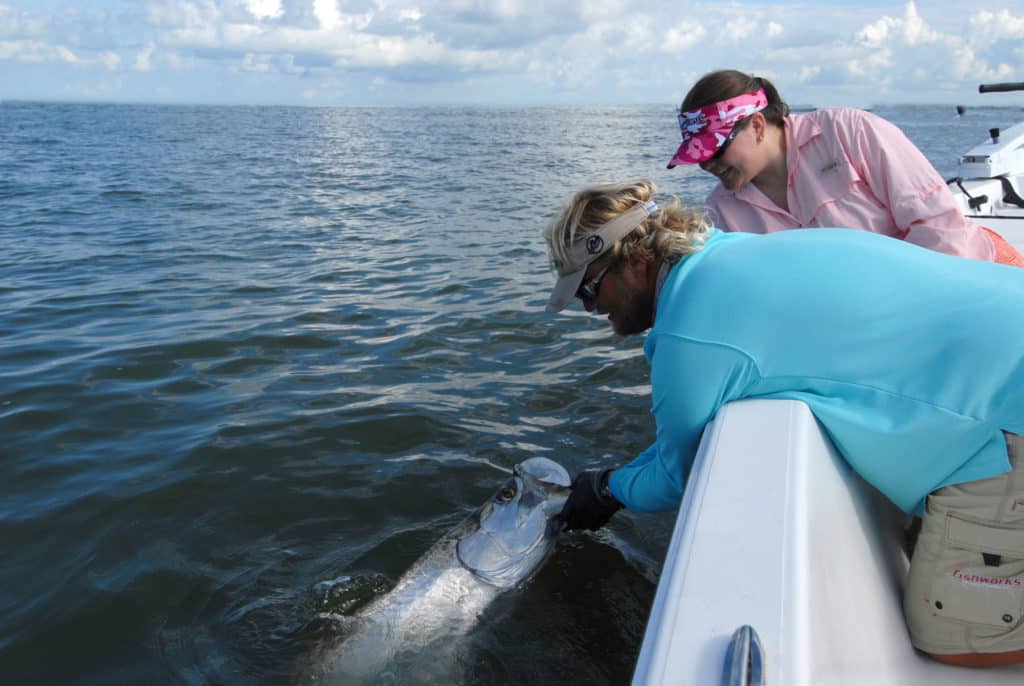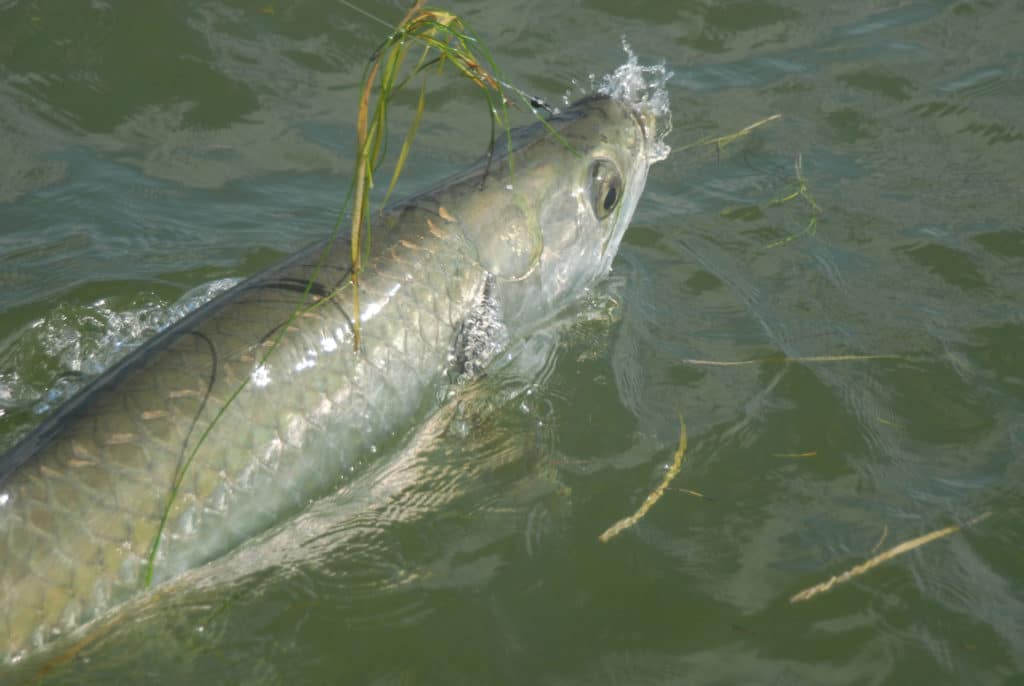
A dazzling blend of aerobatics, strength and endurance, tarpon fishing ranks atop Florida’s impressive diversity of inshore and coastal opportunities. From micro tykes of 10 pounds to jumbos over 150, there’s a Florida tarpon to fit all techniques and experience levels.
The moniker “silver king” aptly describes much more than the shimmering scales wrapping this stunning fish. Spoken with a reverence born of experience, it’s a term by which anglers express their esteem for the state’s most iconic fish. Here’s a look at the many ways anglers engage Florida tarpon.
Deep Passes: From May through early July, world-famous Boca Grande Pass, between Cayo Costa and the south end of Gasparilla Island, finds massive aggregations of tarpon staging for their offshore spawning run. Traditional live-baiters slow-troll pinfish, sand perch, crabs or mullet through key areas (deep holes), and vertically fishing modified jigs also earns the bites.
Other Gulf Coast hotspots include Redfish Pass, Captiva Pass, Big Pass and the Egmont Channel. During the fall mullet run, roughly September through October, several east coast inlets — Port Canaveral, Sebastian, Fort Pierce, Jupiter and Haulover — see whitewater mayhem as hordes of tarpon ravage the migrating forage close to jetties, piers and marinas.

Bays and Harbors: Throughout the deep grass and cuts of Estero Bay, Charlotte Harbor, Sarasota Bay, Tampa Bay and St. Joseph Sound, tarpon scoop up cut bait fished from anchored boats. Floating live baits and sight-fishing flats and bars also produce.
Bridge Bash: At the Sunshine Skyway spanning Tampa Bay, drifting live baitfish or crabs past the pilings tempts tarpon utilizing those current eddies. Some anglers opt for idling and sight-casting corked baits at schools roaming the tides. Bait-school location impacts the game, so electronics are critical.
Florida Keys anglers find numerous opportunities to engage bridge tarpon all along the Overseas Highway, and the bridges spanning Tampa Bay and Miami’s Biscayne Bay also see their share of action.
Off the Beach: West coast live-baiters and fly-fishermen delight at launching tarpon along the sandy shores of Captiva Island, Manasota Key, Anna Maria Island, Mullet Key (Fort DeSoto), Sand Key, Anclote Key, St. George Island, St. Andrews Island and Santa Rosa Island. On the east coast, the Port Canaveral to Hutchinson Island region offers similar opportunities.
Pier anglers also enjoy the fun by holding live baits in key areas with a release clip linking their fishing line to an anchor line snugged to the bottom. When a tarpon bites, the fishing line detaches so the fish can run.

Flats Stalking: From the Keys to the Nature Coast’s famed Oklahoma Flat (between Bayport and Chassahowitzka), anglers silently push-pole skiffs into position for precision casts to singles or groups. Topwaters, shallow-running plugs and flies work on most flats, but the Oklahoma Flat’s seasoned guides strongly favor the latter.
River Runners: Cut bait soaked in channel bends and deep holes (often near sandbars) might interest the bigger tarpon, while plug-casting to rollers adds to the fun. Calmer backwaters, creeks, canals and tiny mosquito ditches offer prime opportunity to engage juvenile tarpon with jigs, swimbaits, slow-sinking twitchbaits and shallow-diving plugs. Venturing into the tight confines, often canopied with mangrove roots, offers a thrilling close-range engagement popular with kayakers.
To book your next fishing trip please visit BaitYourHook.com.





